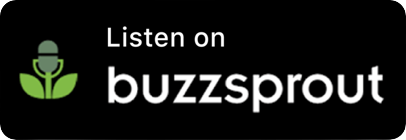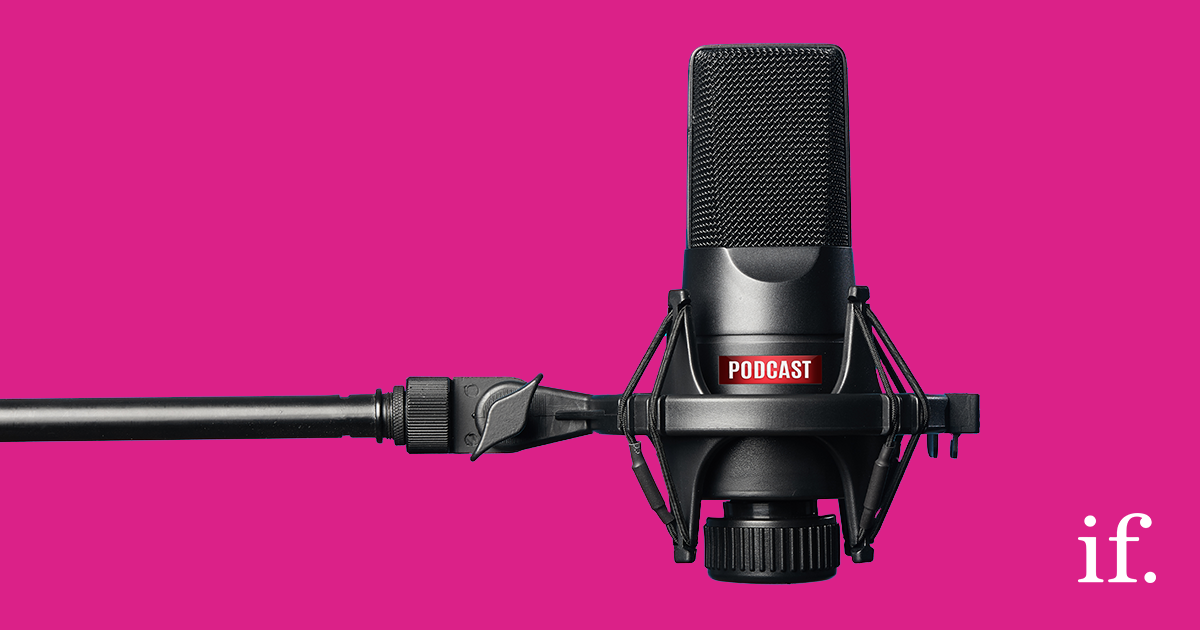Ep 48: Serious Social – Design for social
In this week’s Serious Social Live we’ll be looking at best practice when it comes to design on social, particularly when a brand needs to change perception or communicate sustainability values.
Belle Lawrence is joined by IF Senior Designer, Chantal El-Bikai and OSP Design Director, Sharon Wallace.
If you’re after more know-how to break the social boring, subscribe now.
Full Transcript
Welcome to the Serious Social podcast, created by the straight-talking social media experts at immediate future.
BL – Hello everyone, and welcome to another session of “Serious Social Live.” Today, we are delving into the world of design. We know, and most of you also know that on social you need to be bold to grab attention, but often brands will also have stringent guidelines and they’ll have to consider much more than how the brands look on screen. So from packaging to print and from shelves to social, brands need to tell a story. I’m lucky to have a couple of fab guests with me today to talk through this topic. So I’m going to bring them into the stream now. So firstly, we have senior designer at Immediate Future, this is Chantal. She wows us and our clients with her awesome illustration and animation skills. She’s always pushing the envelope when it comes to innovation. Hi Chantal.
CEB – Hi.
BL – Hello. And second to add to the stream is Design Director at Object Space Place, Sharon Wallace. Sharon and I, met way back in the day when Facebook was a little twinkle in Zucks eye, yeah, we’re that old. But since then, she’s managed design studios for Conran, P&G, FitFlop, and the Football Association to name a few. These days though, she’s applying her passion for sustainability with hospitality brand spaces. Hi Sharon, thanks for joining us.
SW – Good morning ladies. So nice to be here.
BL – Welcome. So we’re going to have quite a nice open discussion today, but we’re going to talk a little bit about brands, design, their perception. Probably a bit about sustainability. So yeah, jump in whenever you want to have an opinion. We like those. So we’ll start off with just generally with social media. Obviously, there’s a lot of benefits that social has for brands. And particularly when we’re thinking about design it can help change the audience’s perception of what’s going on with that brand or what they think of that brand. And I think probably for designers there’s a lot of ways that you can play with social. But I’ll go to Sharon first. What is your sort of thoughts around the benefits that social has for brands?
SW – Well, I think the two work really strongly together. I think they can really support each other kind of on the print side and the social media side. And in terms of changing perceptions, I always like this example I have of Greggs, which I find is quite an unassuming brand I’ve… I mean, I’m not their target audience and that’s fair enough. They just don’t speak to me as a brand. I’ve never really been drawn into their stores.
Having said that, if we go back a few years I remember having a colleague who used to drag me out every Friday to grab her Gregg sandwich, she’d be used to pick up some of those, what were they? Those yum yum donuts for the rest of the team and bring them back. And I remember walking out of that shop every week with the little paper bags feeling like I was doing the walk of shame down the high street because I just thought this doesn’t, this brand just doesn’t speak to me. It doesn’t represent me. And I realised I’m making myself sound like a complete food snob here. But I think where they’ve been very clever and really utilised social media is when they did their veganuary campaign back in, was that 2019? With the vegan sausage roll.
So I just think that was, for me, it was a turning point, because what it did was it took away that kind of, firstly, it gave them a bit of width and humour and it really made them likeable, for me. And it turned around that kind of perception of their stodgy offer, their student offering, student snacks, and made me think, okay, maybe they’ve got a bit more of an up market offering here. Maybe their coffee is actually quite decent, maybe I would pop in and try it and not feel ashamed to walk out again. And I also think what social media does is it allows you to build on that.
So once you’ve had a success like that, they then continued it last year with the Stormzy PR stunt where they’d heard Stormzy in an interview I think talking about what he loves, what his favourite go-to’s were from Greggs. And they picked up on that and it allowed them to be really reactive in that moment. And then off the back of that, they did a Stormzy VIP Card, which many people will remember. And at the time Stormzy had 1.4 million followers, which are also Gregg’s target audience. So I just think it was a very clever campaign and they were able to use that extra platform to really plug in and talk to that extra audience.
BL – Yeah, really build on the reach that they already had but make it a bit more open. I think probably like you said, building on it they then went on to do quite a bit of rebranding. I think their coffee cups are black now, made a little bit more premium feel to it. So they’re kind of build on and on with that. So it’s not seen as that walk of shame with the Greggs paper bag.
SW – That was the past.
BL – Hopefully people don’t feel like that anymore. I’m sure that’s what they were aiming for. But yeah, another brand who’s done a bit of a revamp on their brand very recently is Burger King. I know they’ve been a bit of a topic of conversation certainly in the marketing world this week for a couple of the things they’ve done, but yeah, the rebrand good, bad, loved it hate it. Certainly some of the stuff they’ve done on social hasn’t been that great. And Chantal and I, were talking about that just before this call about why they did things and what do you think they did wrong Chants?
CEB – Well, first off, I absolutely love the Burger King rebrand. It’s just like, chef’s kiss, right. It’s so retro, but modern. I think they did that really, really well. What they didn’t do so well was their Twitter campaign, of the, well not campaign, but it was a post on International Women’s Day where that was a big yikes. But I think they did it poorly on Twitter, but they did it really well on Instagram. Which they had this visual of women belong in the kitchen, but then underneath they have a little fine print of I think it’s like only 20% of chefs are women or something like that. And that’s really grabby. And that’s like, that’s the visual-
BL – They were put you in the same space wasn’t it? All in the same visual.
CEB – Yeah. It was like, it grabs your attention but it’s telling, it’s showing what… Explaining the message, right, without having to over explain like they did on Twitter, which didn’t-
BL – Yeah.
CEB – They just didn’t go down so well.
BL – Yeah, yeah. And that’s something that had we been advising them, I think we probably would have said, maybe use the visual on Twitter rather than just text because yes, the message is right. And they were trying to communicate a value for the business, which is a good value to have, but they just executed it really badly on Twitter. But it also went in print with a much longer message. I suspect it was designed for print and then converted into social. And that’s something that often doesn’t work or at least there are a lot of pitfalls for that. And maybe it’s something that we can get into when it comes to design, because there are a lot of considerations on both sides. And when we’re talking about print, we’re not just talking about newspapers, but like even the packaging like I mentioned on shelves and things like that. So what do you see as kind of the biggest challenges when you’re moving from print to digital or packaging to social, Sharon?
SW – Well, I think with print, particularly for packaging you have a bit more control over it. You go through design approval processes, you’re able to position your product carefully on the shelf. You’re able to consider tactile elements. For example, if you’ve got quite a premium product, you’re going to look at premium feeling packaging, you’re going to look at foil blocking and stuff like that. So to a big extent, you have a lot more control over those elements that you don’t necessarily have on social media. I think what social media does do there is it allows you that extra overflow space if you like. So there’s not much pack room generally to convey an important message or a key message that that brand has. So if you take a subject like sustainability, for example, there’s still a lot of education that is needed around that, particularly when it comes to the consumer. And it’s really difficult to convey all that messaging across in a piece of print. So what we’re able to do I think with social media is use those channels to really continue the story and give it a tone of voice and provide that extra messaging around the brands. And I think the two strands together really create this compelling narrative for a brand and they work well together. They support each other.
CEB – Yeah, I agree. I think they do work like print and digital works hand in hand. On social media things go by a lot quicker than they do in real life. So it’s up to us as a digital designers to make, to convey the message and make it stand out. And if it’s trying to make something look like it’s eco-friendly, how do you do that? You would use something like a wood texture, or I don’t know, brushed cotton or something or you’d go really minimalistic and make it look clean, clean and fresh. Or if, instead of using a photo of mud, you would use those earthy tones to denote eco-friendly.
SW – Yeah.
CEB – So I guess, I mean, how would you do that Sharon in real life by letting people know that this is sustainable, or this is eco-friendly. Is it a case of just putting the sticker on it and saying you can do this? Or is it the feel?
SW – Well, yeah, I mean, it’s interesting that you say that actually, I was talking with a friend a few weeks back and she had a client who was looking for, she was looking for some sustainable packaging for her product. And she was talking to her supplier and the supplier, they narrowed it down to two options. They were cardboard boxes and one of them was a brown cardboard box, and one of them was a white one. And she was basically told, if you want the most sustainable option here, you need to pick the white one because in terms of carbon footprint, et cetera, how this product is made that you’re having less impact on the planet if you pick this white one here. And interestingly, her perception and what she thought her client’s perception, sorry, her customer perception would be, was the brown one, would come across as looking more eco. So yeah, I think as I was saying before about the education we’re not quite there yet. We perceive, the eco options to be less packaging, or the brown simpler packaging, the less processed looking option, but it’s not always the most sustainable.
BL – Yeah, and it’s a really interesting point because again probably if that was a question that was asked to me where we’ve chosen the white packaging, because we know it’s more sustainable, but we also think that our customers are going to have this perception then we have to build a story around that, right. We can create that story and tell it for the brand to get those values across in a way on social that will help them with their values, so they can choose more sustainable option. It’s not just what it looks like on shelves, like you said, you can build on it with social.
SW – Yeah, exactly.
BL – Yeah. And so as we’re talking about sustainability clearly, it’s a bit of a marketing trend and I think generally, maybe a population trend, maybe a world trend to try and be more sustainable. And it’s not even just a trend. It’s got to go a lot further than that clearly. But if we are talking about trends what do you see as what we need to focus on for trends for 2021? I’ll go to Sharon first.
SW – I think what I see coming up is, we’ve come out of the most terrible year. And I think what has happened during that time is we have seen shifts in people’s attitudes and behaviours. So we’ve got a more altruistic outlook. We’ve been talking to neighbours that we’ve never met before. We’ve been supporting each other. We’ve been clapping for carers and you know, all that stuff. And I think from brands, I think brands are going to have to work a lot harder to grab our attention. We’re going to want to see firstly a bit of humour, a bit more humility. And I think we’re going to want to hear that real authentic voice from brands. We’re done with all the façade we want to feel like they’re really human and they’re really speaking to us. I also think, and I wouldn’t say this is a trend. I wouldn’t say sustainability is a trend, because these are things that are here and we’re on a journey towards, but I think we’re continuing to see a lot more diversity in brands, which is excellent. And I think from the sustainability point of view we’re starting to see some exciting things as we start to make advancements in those areas, and we build our knowledge.
So I think either last year or the year before, for example, I received an Easter egg, it was a Hotel Chocolat Easter egg that my partner bought me. And I always love their packaging and I always try and keep their boxes and re-use them for things. But what they did, I think it was last year. It was, they, instead of using the packaging, they put the eggs in a tin, and it was this really beautifully designed almost architectural tin. It fits beautifully into the home, it’s very lightly branded so subtle, and I’ve used it on my side in the kitchen for well, for a year or two years, however long I’ve had it now to just put bits and bobs in. So I think that careful consideration to the end use of that piece of packaging, reusing as opposed to recycling because there’s still a lot of confusion I think around how we recycle stuff. It’s all very well packaging carrying that recyclable logo, but the less we’re recycling it properly, it’s probably still ending up in the landfill a lot of the times.
BL – Yeah.
SW – I also think, we’re seeing some really interesting advancements in mycelium packaging and fun things like seaweed packaging. So I’m really excited to see how they evolve and what comes up with those.
BL – Yeah, and the great thing about that for us as social media marketers, is that they’re brilliant stories to tell. And so the example of the Hotel Chocolat tin, that’s fantastic, but I didn’t know that, maybe they’re not communicating those things enough out to their audience and helping people to choose that more sustainable option. Because really what we want to do is tell stories and tell the brand stories and help consumers understand how to make those choices. What do you think Chantal about trends, that kind of humanising of things?
CEB – Yeah, I think it’s… Just to make a point about the Hotel Chocolat thing. It reminds me of when your mum keeps the quality straight tins and put buttons in it.
BL – Yeah.
CEB – That’s great, but yeah in terms of trends and stuff I think Sharon hit the nail on the head. I think also where brands are being held more accountable to the things that they do, the consumers like, it’s easy for us as a consumer to get onto Twitter and tweet these brands and get a response immediately which is great. But yeah, I just think it’s them giving us the knowledge and I don’t know if that’s the trend, but it’s a good-
BL- Yes.
CEL- Step for us to understand.
BL- Yeah, so kind of brands taking responsibility-
CEB – Absolutely.
BL- For communicating those values. Don’t just assume people are going to look them up, because it is hard to communicate. Like we said, on packaging on a shelf, for example, you’ve got really limited space although you can control it really well. It’s such a limited space to try and explain those kinds of things. So social is an ideal way to try and communicate that and do it in the right way. So I think, yeah, for us, it’s about storytelling. It’s about being thoughtful, being authentic, and we will always try and help brands to tell their stories in a way that doesn’t exclude anyone, doesn’t preach, but just explains it and helps people to make the right choices. So, yeah, I think it’s going to be a really interesting year for that topic for sure.
Excellent. Well, thank you both so much for your time today. This has been a really nice session and there might be some comments on the LinkedIn group. So if anybody is watching and you have questions that you haven’t put to us yet, hop over to the LinkedIn event that’s on our page and then you can post your questions there and we’ll be happy to answer them. So thanks everyone for tuning in.
We’ll be back again next week with Serious Social Live. And if you’ve missed any of them you can catch up on our YouTube channel, Facebook for video. You can also listen to our podcast. So go and subscribe. Pretty much anywhere you get your podcasts, but we’re definitely on Apple and Spotify. So head over there and subscribe today.
Great. Thanks guys. I will speak to you really soon and have a great day.
SW – Thank you.
CEB – Thanks.
SW – Bye.
CEB – Bye.
BL – Bye.
If you’re after more know-how to break the social boring, subscribe now and check out the show notes for links to our website and social profiles.




